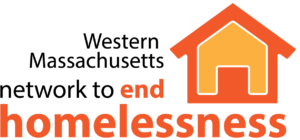Unaccompanied Homeless Youth Committee
November 9, 2016
In attendance: Katrina Colon, STCC, Courtnee Godbolt, Friends of the Homeless, Lisa Goldsmith, DIAL/SELF, Natalie Hill, Gandara Center, Natalie Kyles, Gandara Center, Ann Lentini, Domus, Inc., John Lewis, Shannon Grant, STCC, Kim Majewski, Gandara Center, Heather Murphy, Gandara Center, Gerry McCafferty, City of Springfield, Kristin Peterson, YWCA, Jean Rogers, CHD, Pamela Schwartz, Network, Sarah Tanner, Friends of the Homeless, Jennifer Wands, Springfield Public Schools, Delphine Wray, Friends of the Homeless, Rhonda Young, CHD
Follow-up from last meeting with Shannon/SSYI partners:
- Sharing of vulnerability assessment tools: Pamela will launch an email conversation with John Lewis, Kim Majewski, Lisa Goldsmith, Jean Rogers and Rhonda Young and Sarah Tanner to clarify what would be most useful and who is providing.
- Youth engagement training: it was clarified that it would be useful to provide more information to both youth and non-youth providers about how to best engage with youth, how to ascertain homelessness, what is needed for documentation for services, etc. Pamela will launch an email conversation with Gandara, DIAL/SELF and CHD about how best to move forward with this item, including determining regional or sub-regional approach to trainings.
Annual Point in Time Count: Gerry raised the annual PIT count that will take place on 1/25/17. HUD is asking CoC’s to make a concerted effort to identify homeless youth. This requires a targeted effort to reach unsheltered youth. One strategy offered in a National Alliance to End Homelessness webinar is to identify youth prior to the count itself. They urge using “youth ambassadors” to reach out to other youth. Gerry will seek funding to engage these youth ambassadors. Gerry will call a sub-committee of Hampden County that includes Gandara, CHD, Shannon/SSYI providers and ROCA.amp H
Rebecca Muller noted that in her focus groups (convened to help inform the HUD grant application) she learned about youth “squatting” in apartments that often entailed neglectful/abusive situations. She also noted that feedback from young people included a sensitivity to being “paid to fill out a survey” and then receiving nothing more of what they actually needed. All affirmed taking concrete steps to prevent that experience
The Three County CoCis also convening a sub-group to plan for the Point in Time Count. Lisa will bring input from this committee to that conversation.
Youth Advisory Committee update:
In the contest of the focus groups Rebecca and others are conducting, youth are being asked to complete a short survey for feedback. This survey includes outreach around participating in a youth advisory committee. At least 3 or 4 people have expressed interest. Rebecca will follow-up and will look to convene the first group in December. For DIAL/SELF, youth participation is integrated across all programs, although specific outreach for this advisory committee may also occur to allow for maximum dialogue. We agreed the goal is to bring an active youth voice and input into this committee’s work.
Lisa noted that the Special Commission has youth leaders who are willing to train other committees such as ours on how best to engage and involve youth in leadership. Lisa will follow-up to explore having these leaders come to our meeting to train us.
HUD youth application update:
Gerry reported that work is ongoing for the youth application due on 11/30. The application focuses more on the CoC capacity (since selection includes a 6 month planning process with HUD TA). Gerry has convened meetings of stakeholders and the CoC is sponsoring 6 focus groups of youth.
Statewide Commission update:
Lisa reported that the Commission is planning to convene a Demonstration Work Group for programs who received EOHHS funding for youth and consortium programs. It will likely meet in January. The Commission is also working to supporting the convening of a work group to create a state plan around young adult homelessness.
EOHHS funded youth program update:
State supplemental budget was passed, which included funding for youth and consortium programs. This means roughly $250,000 additional for youth in Hampden County and $150,000 for the consortium. Likely the same for 3 County although this is not confirmed. While this is good news, Rebecca pointed out that we need to be very concerned about funding beyond this fiscal year in order to maintain and grow the progress achieved through this program (e.g., leases for Gandara are year-long and it is critical to be able to maintain continuity to protect both young people and the landlord relationships for future housing opportunities).
Gandara program: Gandara’s apartments are all full (18 through rapid re-housing; 8 in SHINE transitional housing). Referrals are continuing, with notice of an increase in calls from young homeless families.
DIAL/SELF program: using subsidies (as opposed to leasing apartments). About 30 young people involved in case management. Housing search challenge is significant with all the barriers, e.g., lack of rental history, lack of resources and life skills, therefore requiring intensive case management and housing search support. Berkshire County is now officially on board with a contract (through Berkshire Regional Housing Authority) and they are in the process of hiring a full-time staff person. Outreach with GCC has also proven effective with the agreement to bring in providers to their resource center.
On program data review: we agreed to focus on 2nd quarter report (as required by EOHHS and due shortly) at our December meeting to analyze the findings and if/what recommendations we may have to EOHHS for any modifications. The goal is to maximize review of outcomes by year’s end.
Presentation on new Gandara program: Cornerstone Recovery Program for Young Women:
Heather Murphy presented on Gandara’s new program that will serve young women – 18-24 – for residential drug and alcohol treatment recovery support (typically coming from rehab or transitional program). It will provide support on coping skills, self-regulation, education and employment. Will open in January. 15 beds, 3-6 month program. Single only. Open to women from anywhere in the state (DPH funded 2 programs, one for men in the Eastern part of the state and one for women here).
Confidentiality training summary:
Pamela updated the group that the Network’s other committees have hosted Safe Passage to provide a mini-confidentiality training in response to an unintended violation of confidentiality that occurred in the context of emailing a committee email list in search of housing assistance for a family. Because there is substantial overlap in membership between this committee and others where the training has occurred, Pamela summarized the key take-aways:
- Do not send any identifying information (it takes extremely little to trace a person’s identity!) over email and more globally, do not use any committee email list as a housing search tool. Best intentions could accidentally threaten the safety of the person you are trying to help.
- Keep releases of information extremely narrow; never do a group release and be extremely explicit about the information you are asking about and from whom
Please click here for the hand-out provided at the training FYI.
Mapping resources update:
Hampden County sent out a survey to stakeholders to receive all info on resources targeted to youth in relation to homelessness. It will soon be in a format to be shared with a request for feedback. Stay tuned.
Discussion of by-name list for youth:
The role of a by-name list for youth is different than for chronically homeless individuals. The latter population intersects with many more organizations requiring much greater coordination. For youth, in Hampden County, Gandara and CHD are the providers serving homeless youth. The most pressing coordination need is with Friends of the Homeless – connecting young people at the shelter with Gandara – and that is now happening. Gandara in effect holds the by-name list.
The remaining coordination, which is also underway, is to ensure that when young people come up at the REACH meetings, they are connected with Gandara. That is also happening.
The by-name list for CH individuals is also more relevant as their history generally suggests a “coming and going” in and out of the system and the list helps track them on the service “radar” to keep up efforts at engagement. For young people, their circumstances are changing more rapidly which makes it more challenging to track and to determine whether “tracking” is necessary. Very different populations, therefore different needs/roles for by-name lists.
DIAL/SELF relies on internal coordination among their programs to track engagement with youth.
Next meeting: 12/14, 10-11:30 at 91 School Street, Springfield.

